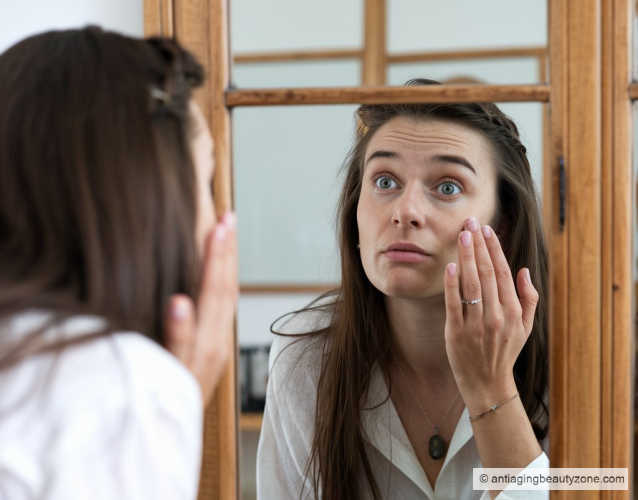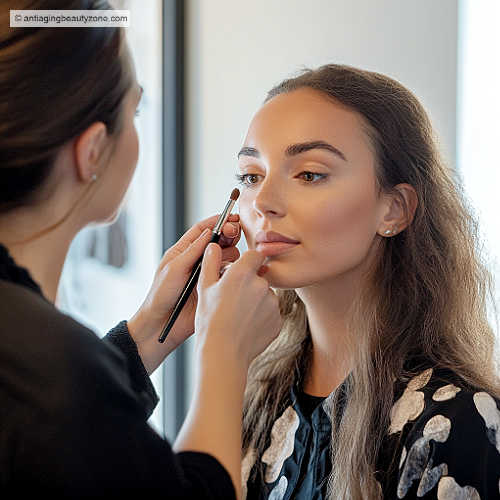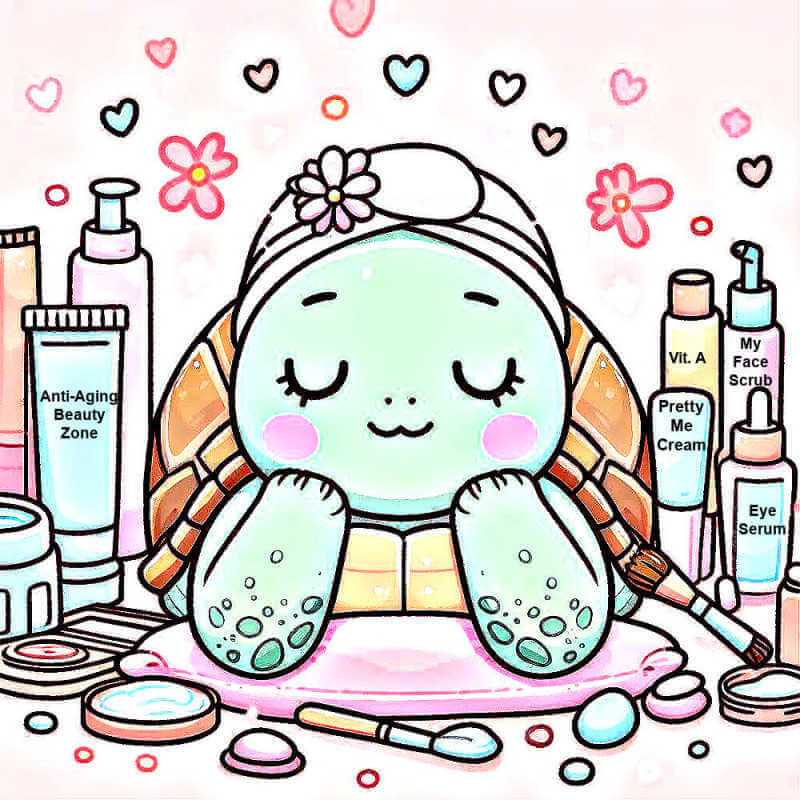As an Amazon Associate, I earn from qualifying purchases and other affiliate links. I only recommend products I’ve tried or researched.
- Home
- Eyeliner Makeup
- How to Apply Eyeliner
- Eyeliner by Eye Shape
- Find Your Eye Shape
How to Find Your Eye Shape: A Simple Guide
by: Linda Robison / Facial Fitness Specialist
Ever try a trendy eyeliner look and wonder why it just doesn’t work on you? The secret might be your eye shape.
Understanding your natural eye contour helps you apply makeup in a way that actually enhances your features—whether your eyes are hooded, round, almond-shaped, or somewhere in between.
In this guide, I’ll walk you through simple steps (mirror test, photos, even measuring!) to help you figure out your eye shape. That way, you can use techniques that actually flatter your face—no guesswork, no frustration.
💥 Ready to finally get eyeliner right for your eyes? Don’t miss my eyeliner tutorial for mature eyes and 10 smart eyeliner tips for aging eyes. These tricks are made for real lids—not the ones in makeup ads.

Why eye shape matters for makeup
Whether they’re almond, round, monolid, or another shape, knowing this helps you pick the techniques that suit you best.
By customizing your makeup routine to your eye structure, you can accentuate your best features and achieve a more polished look.
Won’t it be nice to feel confident with makeup that’s perfect for your eyes? With a little know-how, you can make every makeup session a success.
Ready to see how knowing your eye shape can upgrade your beauty routine? Let’s get started and find your perfect look!
Use the mirror test to identify your eye shape

The easiest way to start is by looking straight into a mirror with your eyes relaxed and open. Here’s what to check:
Crease visibility:
- Hooded eyes: Skin from the brow bone covers the crease when eyes are open.
- Monolid eyes: No visible crease; lid appears smooth and flat. Visible crease: Likely almond, round, or another open shape.
Outer corners:
- Upturned: Outer corners sit higher than inner corners.
- Downturned: Outer corners dip below inner corners.
- Straight: Outer and inner corners are about level.
Overall eye shape:
- Almond: Slightly pointed ends, visible crease, wider than higher.
- Round: More white visible around the iris, softer edges.
- Close-set / wide-set: Distance between eyes is less than or more than one eye width.
Eye depth:
- Deep-set: Eyes appear more recessed, brow bone is prominent.
- Protruding: Eyes extend slightly outward, lids may appear more rounded.
Once you’ve looked at all four of these areas, you’ll start to get a clearer sense of which category your eyes fall into—and which makeup techniques will suit them best.
Step-by-step: How to find your eye shape

I found the mirror test the best and most accurate way to determine the shape. I used a soft black (cheap) eyeliner pencil that I purchased at the Dollar Store. 😉
Position Yourself and Prepare:
In a well-lit room stand or sit in front of a mirror at eye level. Ensure the mirror is clean and free from smudges.
Draw the Reference Line:
Using a pencil or non-permanent marker, draw a horizontal line across the mirror at the level of your pupils while looking straight ahead.
This line should be parallel to your eyelid when your eyes are open. It will help you determine the general alignment and symmetry of your eyes.
Trace Your Eye Shape:
With the same pencil or marker, gently trace the outline of your eye shape on the mirror while looking directly at your reflection. Focus on tracing both the top and bottom contours of your eye.
- For Round Eyes: The tracing will show a rounded shape.
- For Almond Eyes: The tracing will reveal a more elongated, almond shape.
- For Other Shapes: The tracing will reflect the specific contour of your eye shape, whether it’s monolid, hooded, etc.
Compare the Line and Shape:
Check how your eye shape lines up with the horizontal guide. Are your outer corners higher, lower, or even with the inner ones? I’ve found this makes it easy to tell if your eyes are upturned, downturned, or straight—which really helps when picking the most flattering makeup.
How to take photos to analyze your eyes
Taking clear photos of your eyes helps you see their shape better than a mirror. Photos let you view your eyes from different angles and in good lighting, so you can notice details you might miss otherwise. This helps you spot any differences or features that can affect your makeup too.
How to Take the Best Photo:
- Use Good Lighting: Natural light or a bright lamp works best to avoid shadows.
- Capture Multiple Angles: Take pictures from straight-on and slightly to the side to see different views.
- Ask for Help: Have someone else take the photos to keep the camera steady and properly positioned.
- Keep the Camera Steady: If you’re taking the photo yourself, use a tripod or keep your hands still to avoid blurriness.
- Close-Up Shots: Zoom in to get clear, detailed images of your eyes. This makes it easier to see details like the crease shape and any differences.
Using these tips will help you get a clear view of your eye shape, making it easier to choose the right makeup techniques.
Measure your eyes for better symmetry
If you're detail-oriented, measuring your eye dimensions can give you the most precise view of shape and symmetry.
By measuring things like the distance between the corners of your eyes or the height of your eyelid creases, you can see how your eyes are shaped and if they are even. This can help you adjust your makeup for a more balanced look.
To get started, follow these easy steps:
Get Your Tools:
- Use a ruler. A soft measuring tape with small markings will work much better than a hard ruler.
Take Measurements:
- Eye Width: Measure from the outer corner of one eye to the outer corner of the other.
- Crease Height: Measure from the top of your eyelid to the crease, if you have one.
- Pupil to Outer Corner: Measure from the center of your pupil to the outer corner of your eye.
Write Down Your Results:
- Note down your measurements so you can see any differences between your eyes.
Compare and Adjust:
- Look at the measurements for both eyes. If they’re not the same, use this info to adjust your makeup and make both eyes look more balanced.
Using these measurements can help you apply makeup (see tips below) in a way that highlights your eye shape and evens things out.
These tips are based on my personal experience working with mature eyes—and I’ve tested these methods myself. But everyone’s eye shape is a little different, so feel free to adapt!
Need help? Ask a pro makeup artist

Need a little help?
A pro makeup artist can give you personalized tips that really work for your unique eye shape. They’ll show you the best techniques to bring out your natural beauty and even solve any specific makeup challenges you’ve got.
Plus, you’ll walk away with some game-changing tricks you can use every day.
Next step: Makeup tips for your eye shape
Now that you know your eye shape, you can finally start using makeup techniques that truly flatter.
Want help putting it all into action? Start with my Eyeliner Tutorial for Mature Eyes for the basics, or jump into my Top 10 Quick Eyeliner Tips for Aging Eyes for quick, smudge-proof tricks that lift and define.
You can also check out the Eyeliner by Eye Shape guide for tailored tips based on whether your eyes are almond, hooded, round, or something in between.
But what if your eyes aren’t perfectly symmetrical? Don’t worry—makeup can help even things out and bring out your best features.
Here are some easy ways to enhance balance and correct asymmetry:
What to do if your eyes are asymmetrical
By customizing your makeup application to your specific eye shape, you can make your eyes appear larger or more defined. And balance asymmetry between your eyes by highlighting or minimizing certain features (like lifting drooping outer corners).
Eyeliner: Apply a less eyeliner to a smaller eye or adjust the line to even things out. This helps make both eyes look more similar. Heavy eyeliner can make an eye look smaller.
Eyeshadow: Blend more eyeshadow on the smaller eye to make it look more balanced with the larger one.
Highlighting: Use a highlighter on areas you want to stand out. This can create the illusion of more even eyes.
Contouring: Apply contour to areas that need balancing. It can help make your eyes look more symmetrical.
About the Author:
Linda Robison is a Facial Fitness Specialist and the founder of Anti-Aging Beauty Zone. With decades of hands-on experience, she shares practical, natural ways to lift and brighten mature skin—without expensive or invasive treatments.
Before you go ....
Please tap on the💙in the bottom right corner if you found this page helpful.
FOLLOW ME FOR MORE TIPS:
SHARE OR SAVE FOR LATER:

